SPACE RACE
Saving Earth from asteroids – Nasa’s Dart mission
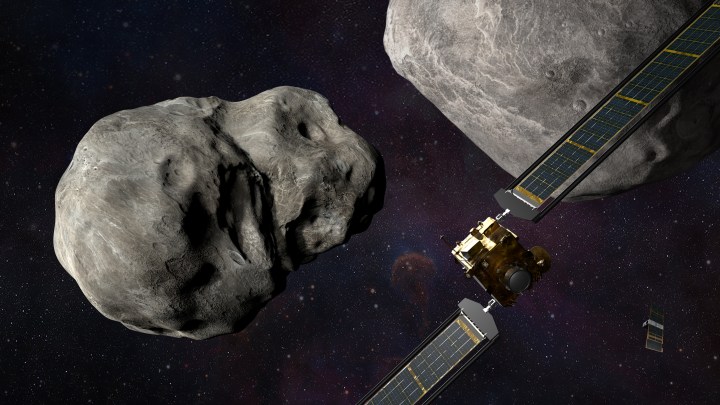
On 26 September, Nasa’s Double Asteroid Redirection Test successfully slammed into an asteroid in the name of planetary defence. Here’s why Nasa is hurling spacecraft at space rocks.
A week ago, Nasa tested for the first time its latest planetary defence system, designed to save Earth from asteroids heading our way. The Double Asteroid Redirection Test (Dart) successfully collided with the asteroid Dimorphos, and experts are now waiting to see how effective this method is.
“Dart is turning science fiction into science fact and is a testament to Nasa’s proactivity and innovation for the benefit of all,” said Nasa administrator Bill Nelson.
“In addition to all the ways Nasa studies our universe and our home planet, we’re also working to protect that home, and this test will help prove out one viable way to protect our planet from a hazardous asteroid should one ever be discovered that is headed towards Earth.”
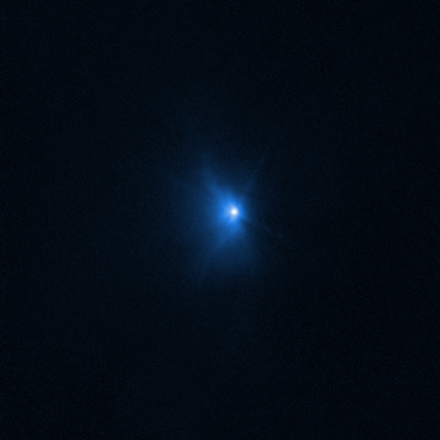
This animated GIF combines three of the images Nasa’s Hubble Space Telescope captured after Nasa’s Double Asteroid Redirection Test (Dart) intentionally impacted Dimorphos, a moonlet asteroid in the double asteroid system of Didymos. The animation spans from 22 minutes after impact to 8.2 hours after the collision took place. As a result of the impact, the brightness of the Didymos-Dimorphos system increased by 3 times. The brightness also appears to hold fairly steady, even eight hours after impact. Credit: Science: Nasa, ESA, Jian-Yang Li (PSI); animation: Alyssa Pagan (STScI)
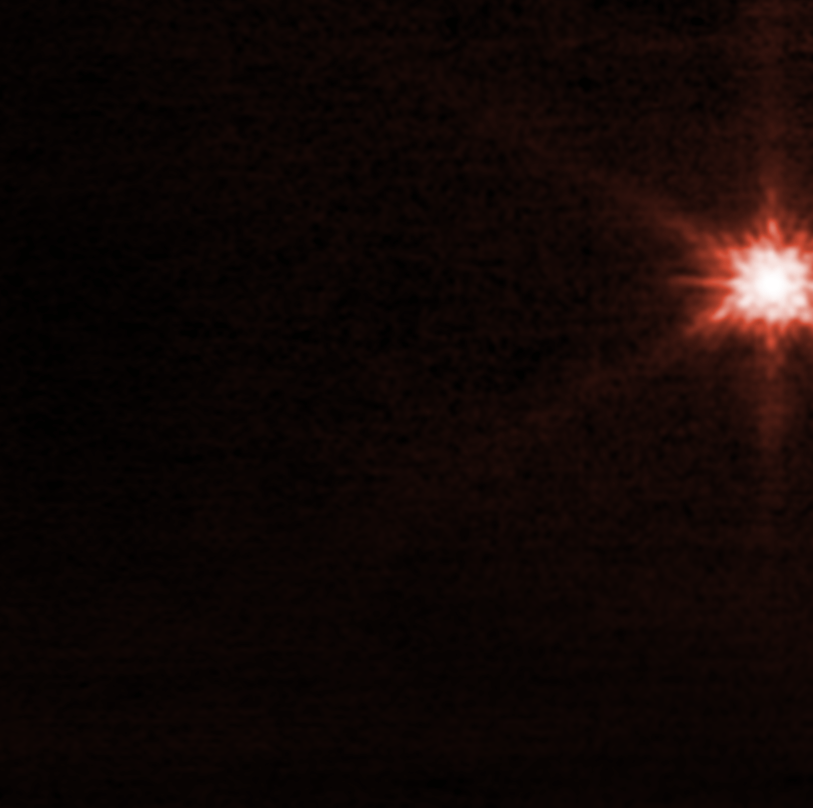
This animation, a timelapse of images from Nasa’s James Webb Space Telescope, covers the time spanning just before impact at 7.14pm EDT, September 26, through five hours post-impact. Plumes of material from a compact core appear as wisps streaming away from where the impact took place. An area of rapid, extreme brightening is also visible in the animation. Credit: Science: Nasa, ESA, CSA, Cristina Thomas (Northern Arizona University), Ian Wong (NASA-GSFC); Joseph DePasquale (STScI)
What is Dart?
Dart is the world’s first test of defending the planet from asteroids using kinetic impact, but the goal is not to destroy the offending space rock but rather to alter its orbit. This is achieved by crashing into the asteroid, at speed and with force, to knock it slightly off course so it passes by Earth, instead of potentially crashing into it. Specifically, Dart’s mission was to see how effective this would be as a way to protect Earth, and how much, if at all, the asteroid could be shifted.
Dart was launched to deliberately collide with Dimorphos, a moonlet of a larger asteroid, Didymos. Didymos was discovered in 1996 by researcher Joseph Montani, and seven years later the existence of Dimorphus was confirmed. In Greek, dimorphos and didymos mean twin; having two forms, and the two asteroids are a binary pair, with the egg-shaped Dimorphos orbiting Didymos. Neither is actually a threat to Earth, but they are close by, so this made Dimorphos the perfect test subject.
Just like Earth, the asteroid pair orbit the Sun, and do come close to Earth at times during this rotation. At its closest, the pair passed only 0.048 AU from Earth (something like 7,180,697km) – where one unit AU is the distance from the Sun to the human planet – and at its farthest, on the other side of the Sun, around 3 AU away. Didymos, the larger of the two, is about 780 metres in diameter, while the moonlet is only 160 metres, spinning rapidly around its neighbour with about a kilometre between them. This is how Nasa will know if Dart was effective: did Dimorphos’ orbit around Didymos change after the impact?
The Dart mission
While only making impact within the last week, Dart has been in the works for much longer. It officially launched on 24 November 2021 on a SpaceX Falcon 9 rocket from California with its one-way, no-return ticket to Dimorphos. On board was Draco, a LiciaCube and 8m solar arrays that unfurled after Dart detached from the rocket.
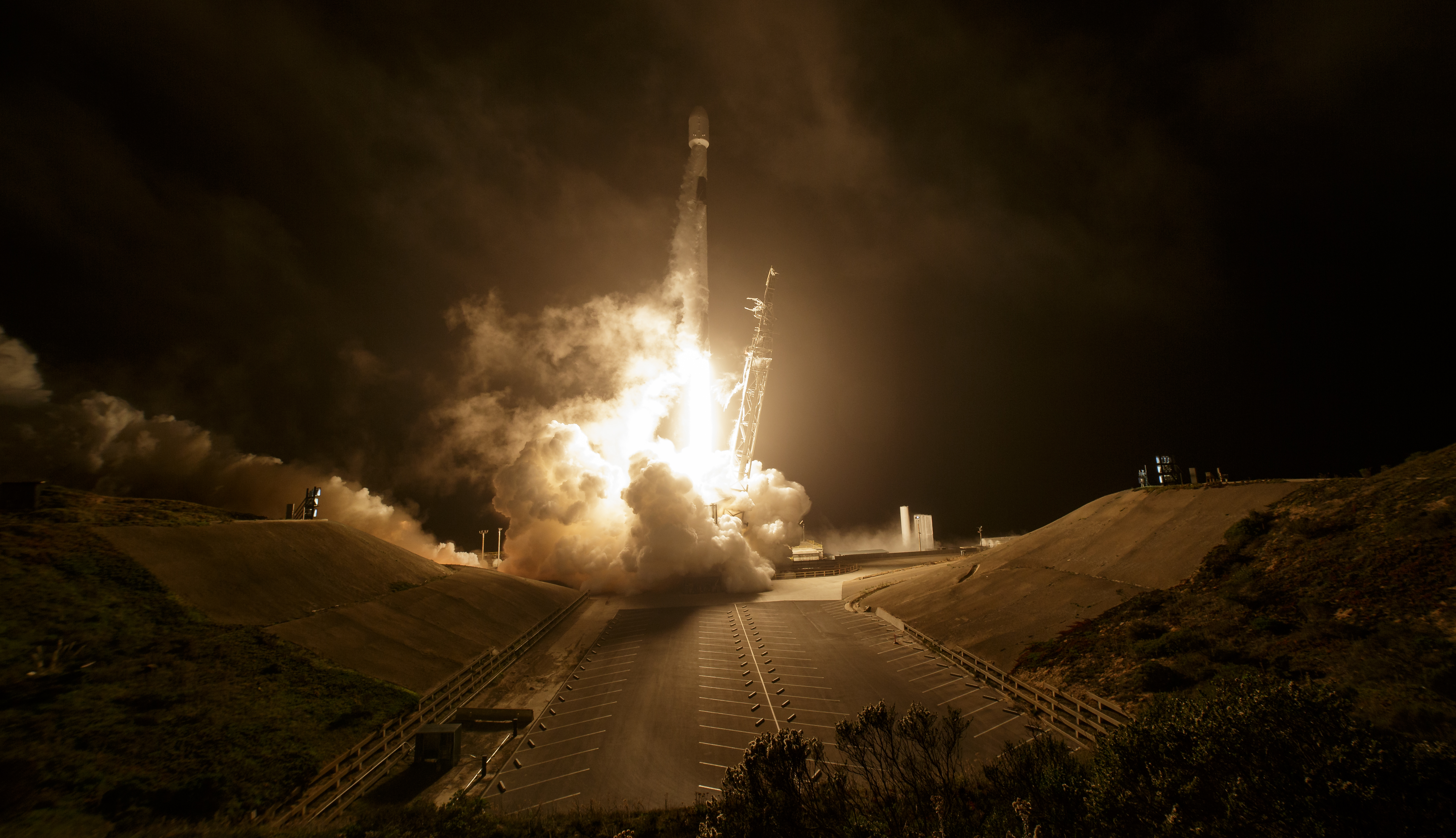
The SpaceX Falcon 9 rocket launches with the Double Asteroid Redirection Test, or Dart, spacecraft onboard, Tuesday, November 23 2021, Pacific time (November 24 Eastern time) from Space Launch Complex 4E at Vandenberg Space Force Base in California. Image: Nasa / Bill Ingalls
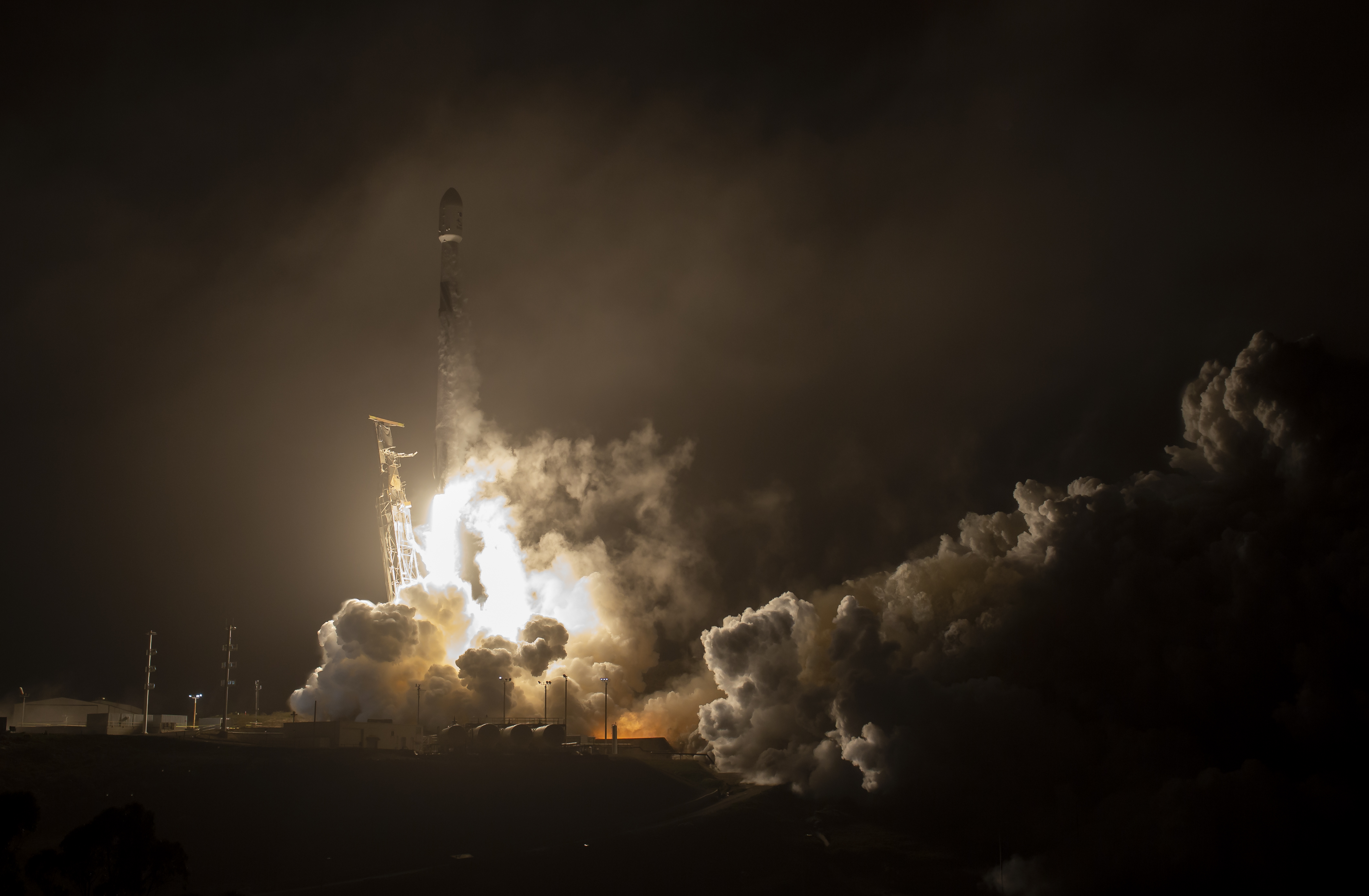
The SpaceX Falcon 9 rocket launches with the Double Asteroid Redirection Test, or Dart, spacecraft onboard, Tuesday, November 23 2021, Pacific time (November 24 Eastern time) from Space Launch Complex 4E at Vandenberg Space Force Base in California. Image: Nasa / Bill Ingalls
The Didymos Reconnaissance and Asteroid Camera for Optical navigation (Draco) is a high-resolution imager that helped Dart navigate and also supplied images of the asteroids. The shoebox-size Light Italian CubeSat for Imaging of Asteroids (LiciaCube) split from Dart a few days before they reached Diphormos and captured images of the impact with the asteroid.
Ten months after departure, Dart smashed into Dimorphos at about 22,530km per hour – or six kilometres per second. Over the next few months, it’s up to time and the experts to determine if that was enough.
Moments before collision, Draco took its last images, revealing the surface of Dimorphos before plunging into the space rock.
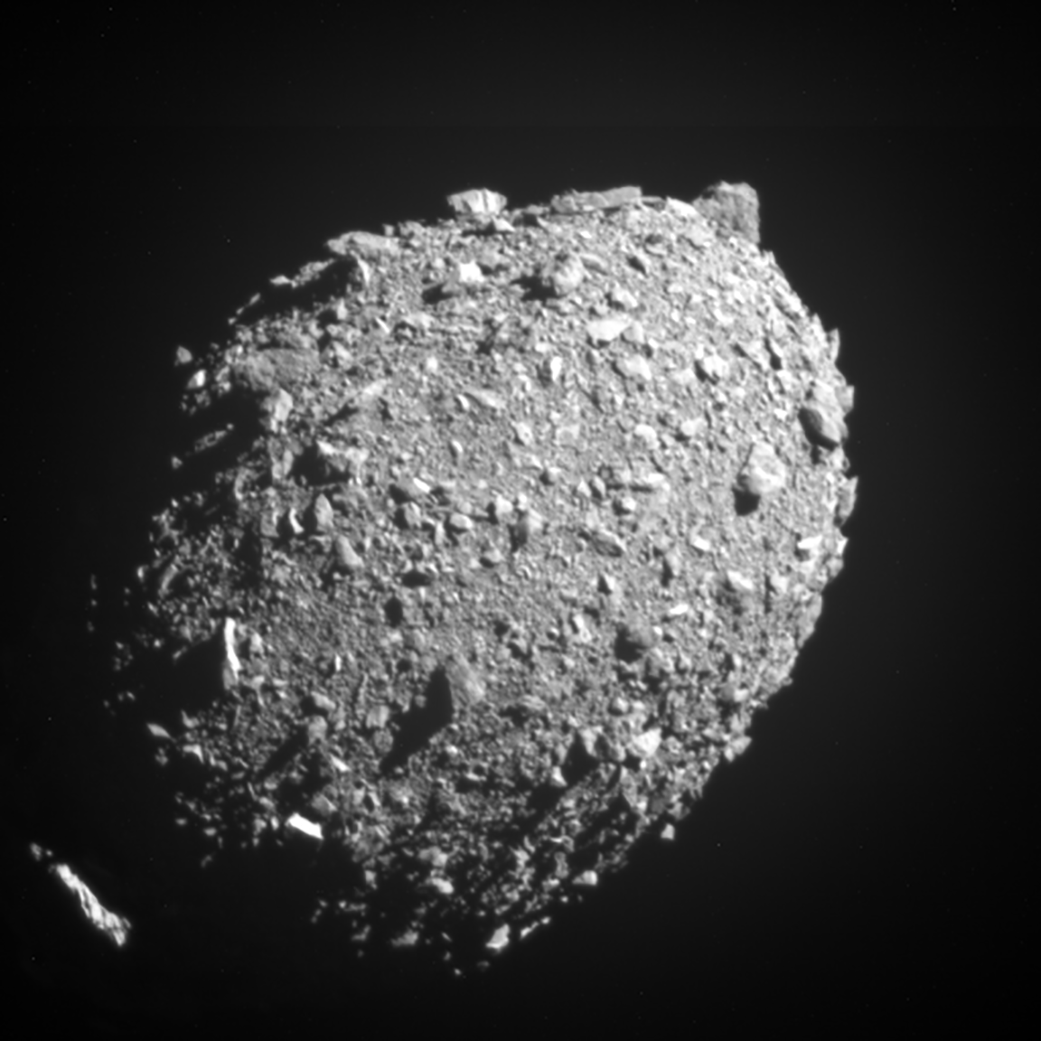
The last complete image of asteroid moonlet Dimorphos, taken by the Draco imager on Nasa’s Dart mission from ~7 miles (12 kilometres) from the asteroid and two seconds before impact. The image shows a patch of the asteroid that is 100 feet (31 metres) across. Ecliptic north is towards the bottom of the image. This image is shown as it appears on the Draco detector and is mirror flipped across the X-axis from reality. Credits: Nasa / Johns Hopkins APL
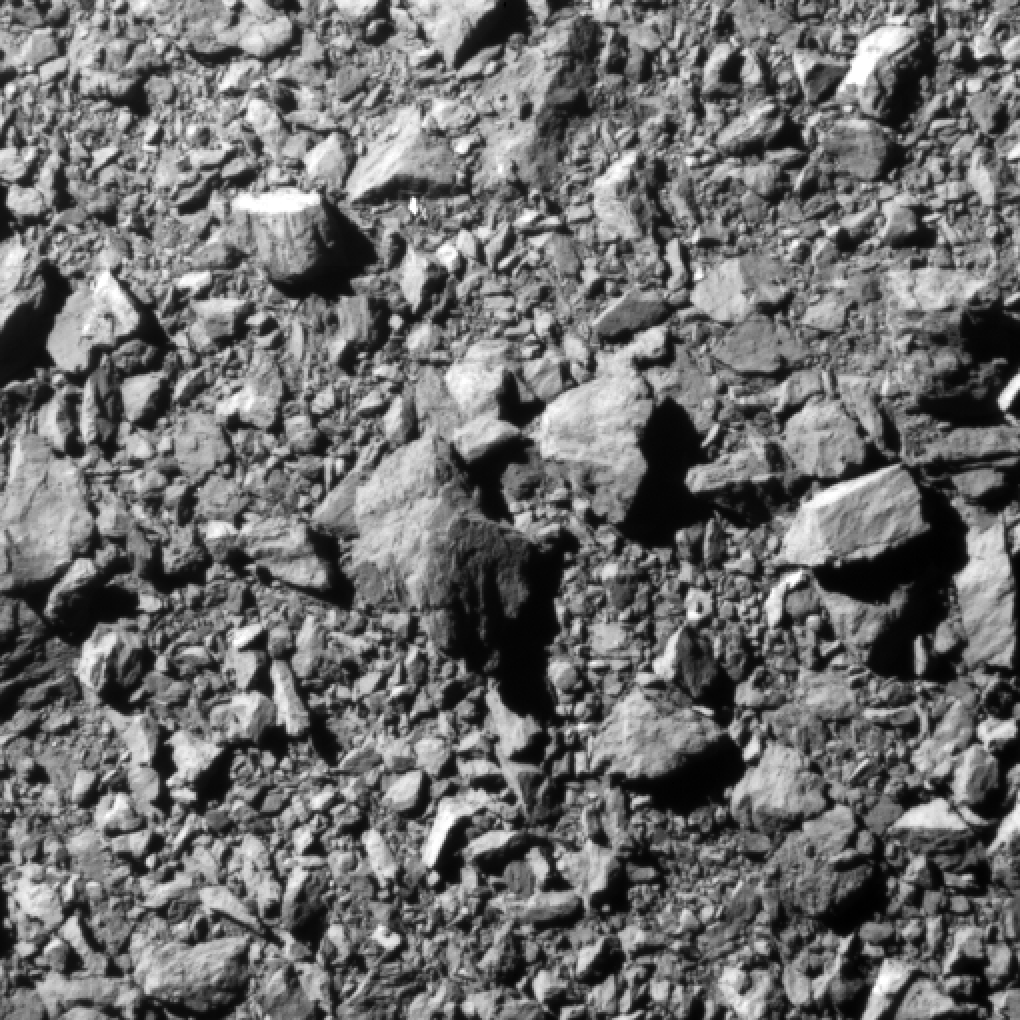
The last complete image of asteroid moonlet Dimorphos, taken by the Draco imager on Nasa’s Dart mission from ~7 miles (12 kilometres) from the asteroid and two seconds before impact. The image shows a patch of the asteroid that is 100 feet (31 metres) across. Ecliptic north is towards the bottom of the image. This image is shown as it appears on the Draco detector and is mirror flipped across the X-axis from reality. Credits: Nasa / Johns Hopkins APL
Did it work?
According to Nasa, Dart has four main objectives:
- Demonstrate a kinetic impact with Dimorphos;
- Change the binary orbital period of Dimorphos;
- Use ground-based telescope observations to measure Dimorphos’s period change before and after impact; and
- Measure the effects of the impact and resulting ejecta on Dimorphos.
Using these four guidelines, Nasa will then determine “how much Dart’s impact altered the moonlet’s velocity in space by measuring the change in its orbit around Didymos”. In a real scenario, this altered velocity and change in orbital period should knock an asteroid off its collision course to Earth and send it whizzing past instead.
When Dart smashed into Dimorphos, the first part of the mission was achieved: Nasa proved it can guide a spacecraft to intercept an asteroid. Other results are yet to be fully seen, but so far scientists think the collision changed the speed of Dimorphos by a fraction of one percent, which should alter its orbit by several minutes.
“Dart’s success provides a significant addition to the essential toolbox we must have to protect Earth from a devastating impact by an asteroid,” said Lindley Johnson, Nasa’s planetary defence officer.
“This demonstrates we are no longer powerless to prevent this type of natural disaster … a Dart successor could provide what we need to save the day.”
Nasa experts will now evaluate how effective this sort of mitigation approach is and how it can best be applied to future scenarios, in which the planet needs to be defended from incoming asteroids.
“Capabilities based on Dart could one day be used to change the course of an asteroid to protect our planet and preserve life on Earth as we know it,” said APL director Ralph Semmel.
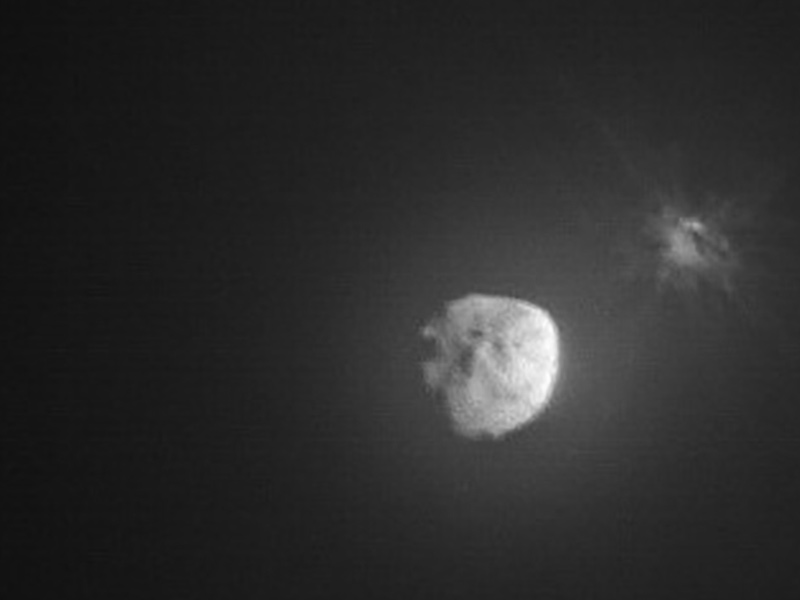
Image captured by the Italian Space Agency’s LiciaCube a few minutes after the intentional collision of Nasa’s Double Asteroid Redirection Test (Dart) mission with its target asteroid, Dimorphos, captured on September 26, 2022. Credits: ASI / Nasa
How likely is a deadly asteroid?
Central to Nasa’s planetary defence programme is the Near-Earth Object Observations Program, which locates, tracks and characterises objects that are bigger than 140m – just bigger than a soccer field. These asteroids pose the greatest risk to Earth due to the level of devastation their impact would cause, according to Nasa.
To put that in perspective, an undetected asteroid that was only 18m wide exploded over Chelyabinsk, Russia, in 2013, affecting six cities in the region, injuring more than 1,600 people and causing about $30-million in damage.
The impact of asteroids bigger than 140m is unimaginable, however, Nasa believes that there is no known such asteroid that poses a significant risk of colliding with Earth in the next 100 years.
In March 2022 a smaller asteroid, 2022 EB5, hit the ocean off the coast of Norway and was only detected 40 minutes before impact. Its small size of around two metres meant it only got bright enough to be detected just before impact. Asteroids like this are not tracked, but Nasa’s Near-Earth Object Observations Program would be aware of bigger asteroids with years to spare.
‘Don’t look up’
With all this talk of asteroids wiping out Earth and humanity, readers may remember the 2021 film Don’t Look Up, in which astronomers detect an incoming comet that will destroy the planet. Astronomers Dr Randall Mindy (Leonardo DiCaprio) and Kate Dibiasky (Jennifer Lawrence) try to warn the world of the impending disaster but get pushback from denialists.
In the real world – and with a literal interpretation of the film – Mindy and Dibiasky would have celebrated the success of Dart. However, director Adam McKay wrote Don’t Look Up as a climate crisis metaphor, a satirical take on the dire state the planet is in, with many continuing to deny it and refusing to “look up”.
“Adam McKay conceived of Don’t Look Up as a warning,” The Atlantic’s David Sims writes, as McKay tells him he just “had to do something about the climate.”
Humanity now has a shot at defending against the literal asteroid from Don’t Look Up, but some are concerned more about what the film was actually trying to warn of, and why Nasa is spending upwards of $324.5-million when there is already a planet-ending crisis on Earth.
NASA scientist Peter Kalmus (@ClimateHuman) says the DART asteroid mission shows humanity is capable of great things.
“But it just feels so weird to me as a climate scientist that we can do all this amazing stuff and yet we’re still careening headlong into climate catastrophe.” pic.twitter.com/4otLh7KFUv
— Democracy Now! (@democracynow) September 28, 2022
As Nasa climate scientist Peter Kalmus says, it is not a bad thing that the planet has the capability to defend against these threats from space, but there are threats on Earth that are being ignored.
“But it just feels so weird to me as a climate scientist that we can do all this amazing stuff and yet we’re still careening headlong into climate catastrophe,” Kalmus tells Democracy Now.
“I’m terrified of the inaction of world leaders who keep dancing around the real issue.”
“It’s a bittersweet thing. We’re finding exoplanets, we’re doing these amazing missions like redirecting asteroids, and yet, with all that technology, with all that knowledge, somehow it’s not translating into stopping what is clearly the biggest threat facing humanity. “
There is still much to do. DM/ML
In case you missed it, also read Nasa’s Artemis mission – to the moon and beyond




















 Become an Insider
Become an Insider
Comments - Please login in order to comment.